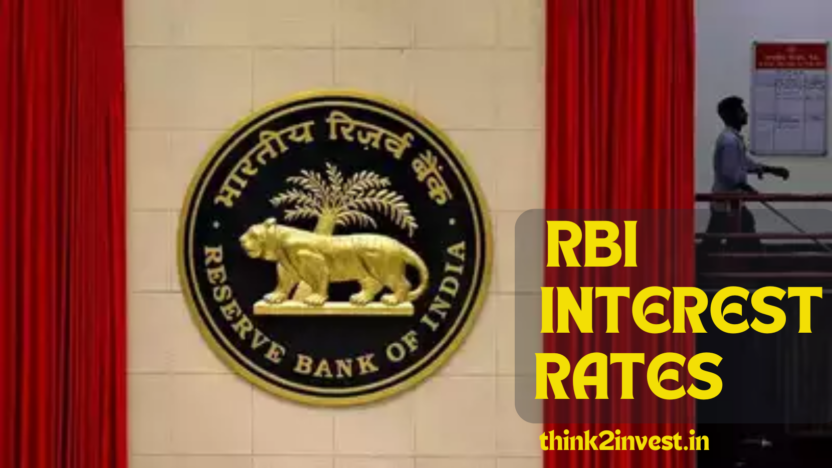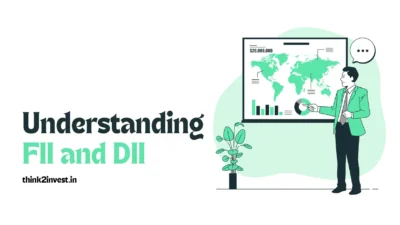Reserve Bank Of India🏦
Imagine this: You want to buy a house. You go to the bank, and they offer you a loan at 6.5% interest. A year later, your friend goes to the same bank for the same loan—but the rate is now 9%. Why the difference?
The answer lies in one place: The Reserve Bank of India (RBI).

🔍 What Are RBI Interest Rates?
The Reserve Bank of India (RBI) is India’s central bank. One of its main jobs is to control inflation, ensure economic stability, and support growth. It does this by changing a key tool: interest rates.
The most important one is the repo rate—the interest rate at which RBI lends money to commercial banks. When this rate changes, it affects almost every financial decision in the country—from your EMI to business loans, to FD returns, and even stock markets.
📈 High vs. Low Interest Rates — What’s the Big Deal?
Let’s break it down simply.
✅ When RBI Lowers Interest Rates:
- Borrowing becomes cheaper (home loans, car loans, business loans).
- People and companies spend more, boosting the economy.
- Businesses expand faster because capital is cheaper.
- But, there’s a risk: too much money in the system can lead to inflation (rising prices).
During the COVID-19 slowdown, RBI reduced rates to stimulate spending and avoid a deep recession.
🚨 When RBI Raises Interest Rates:
- Loans become expensive. EMIs go up.
- Spending and borrowing slow down.
- This helps to control inflation when prices rise too fast.
- But, it might slow economic growth and investments.
In 2022-2023, RBI hiked rates several times to tame inflation caused by global oil and food price shocks.
🏢 Impact on Companies
| Interest Rate | Pros | Cons |
|---|---|---|
| Low Rates | Easy to borrow and invest in expansion | Margins can shrink for banks |
| High Rates | Good for banks, safer for lenders | Costlier for companies to borrow, may slow hiring |
- Companies thrive in low interest environments: cheaper capital, higher profits, faster growth.
- But if rates are too low for too long, inflation can eat into profits and disrupt planning.
🏦 Impact on Banks
- Low Interest Rates: More loans are taken, but profit margins shrink.
- High Interest Rates: Loan demand drops, but banks earn better margins.
- However, rising rates can increase bad loans (NPAs) if people can’t repay.
🇮🇳 Impact on the Country
- For the Economy:
- Low rates fuel growth, spending, jobs.
- High rates keep inflation under control.
- For the Rupee:
- Higher rates attract foreign investors ➜ Rupee strengthens.
- Lower rates may weaken the currency but help exports.
🕰️ When and Why Does RBI Change Interest Rates?
The RBI’s decision is based on:
- Inflation (target: around 4%)
- GDP growth
- Global conditions
- Liquidity in the banking system
Every two months, RBI’s Monetary Policy Committee (MPC) meets to decide the rates.
📊 As of 2025, RBI has maintained higher interest rates to manage inflation while monitoring global oil prices and domestic food supply.
| Sector | Low Rates | High Rates |
|---|---|---|
| Real Estate | Boosts demand | Slows construction |
| Banking | Lower margins | Better net interest income |
| FMCG | More consumer spending | Slower rural demand |
| Exports | INR weakens, boosts sales | INR strengthens, hurts pricing |
| IT | Neutral | Affected via global rate cycles |
🎯 Why RBI’s Interest Rates Matter to You
- Your home/car loan EMI depends on it.
- FD and savings returns are affected.
- Stock markets react to rate announcements.
- Small businesses plan expansions around borrowing costs.
- Even government borrowing and budget allocations are impacted.
📘 In a Nutshell
RBI doesn’t just adjust a number—it influences the financial heartbeat of the nation. Whether you’re a salaried person, business owner, banker, or investor, RBI’s interest rate decisions affect your life in more ways than you might imagine.
So next time you hear “RBI keeps repo rate unchanged” or “RBI hikes rate by 25 bps,” know that it’s more than financial jargon—it’s a ripple that touches every corner of the economy.





